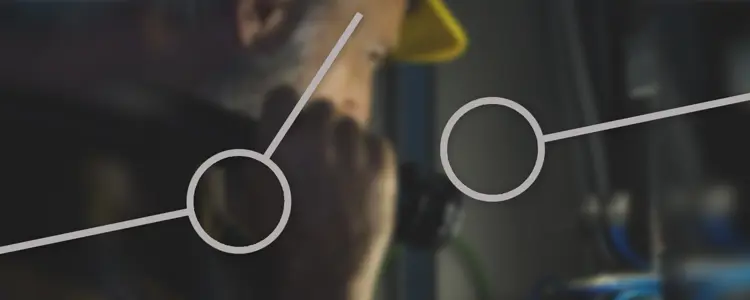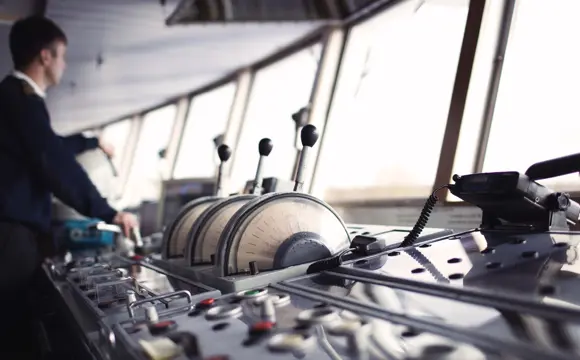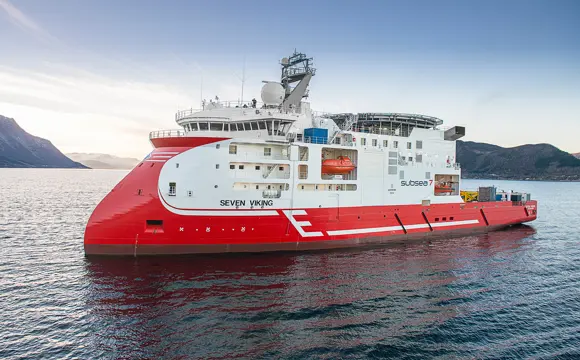Retrofit your vessel and prolong its lifetime
Retrofit expert Pau Madsen is an electronics technician, and he has been with DEIF for 25 years. He has performed retrofits on all types of vessels and knows all there is to know about power management retrofits, what to avoid, and what benefits to gain.

Vessels often undergo a mid-life retrofit performed when in dry dock or when docked at the port and that is an opportune time to retrofit the power management system. However, Pau and his team also perform retrofit while the ship is in operation. Most recently they made a power management retrofit on an FPSO (Floating Production Storage and Offloading) while it was operating – a project that required extensive engineering and profound knowledge.
“When you are doing a retrofit on a ship in operation, the engineering phase is essential to succeed with the project. If something goes wrong, it can have serious consequences. Planning and engineering a retrofit that will take place while the ship is in operation is much more time-consuming but necessary for a successful retrofit”, Pau explains.
Of course, it is more convenient to retrofit a ship when is in port or dry dock, but with many projects on vessels under the belt, Pau and his experienced team know exactly how to perform retrofit projects on vessels in operation without jeopardising security or performance. The FPSO ship in question was also completed successfully and is now equipped with a modern and future-proof power management system.
The small print is important
It is individual what shipowners attach importance to when looking for the optimum retrofit partner, but no matter the preferences, it is essential to find a partner with proven competencies. Pau also has a few tips on how to avoid potential pitfalls when searching the market.
“When scanning the market for a suitable retrofit partner, it is important to read the small print. Throughout my career, I have experienced shipowners finding our offer too expensive and therefore, have chosen another partner. However, several of them have been unpleasantly surprised when receiving the account as a lot of reservations had been made adding costs that way exceeded our initial offer”, Pau says. Retrofitting is not only about changing components but also to make sure that the technical documentation is updated, securing class approvals and training the crew, etc.
For a complete retrofit, DEIF takes responsibility for de-installation of the old system, installation and test of a new system, integration of the system to external equipment, updating of technical documentation and approval of the new system with a classification society.

Retrofitting is always worthwhile
Lifespan on electrical components is regardless of quality limited. Even though it can be tempting not to retrofit an obsolete power management system as the vessel is planned to be scrapped in a couple of years, Pau advises to go through with a retrofit. “We have often experienced shipowners neglecting to retrofit a power management system because the ship only was expected to be in operation for two more years. Then after two years, the ship is still in operation, but they are unable to get spare parts, or the system fails, “Pau says. An unplanned retrofit is expensive as the ship needs to be put out of operation and blackouts can occur.
Besides assuring spare parts availability and increasing reliability, a retrofit of your existing power management system also can improve fuel economy due to improved settings. “We have experienced that customers are saving fuel as the new power management system features new functions and optimised settings that in some situations make it possible to run with fewer engines”, Pau reveals.
Modern technology
Much has happened within technology development over the years, and everything is becoming increasingly digital. Controller interfaces have developed from LCD displays with pushbuttons to intuitive touch screens with tablet-like functionalities. A development that reflects on the retrofits projects as many customers take advantage of the opportunity to implement DEIF’s new Advanced Graphical Interface AGI on board, providing them with an improved overview and a more user-friendly system. “After launching the touch display, we are often asked to incorporate it in our retrofit solutions as people find it much easier to operate the controller with a touch display and it can be used for different applications making it versatile and eliminates the need for other instruments”, Pau explains.
Popular and widespread power management system to be discontinued
The widespread power management system Delomatic-3 from DEIF is installed on countless ships around the world. The system has been on the market for more than a quarter-century and is being phased out by the end of 2019. That means a lot of ships are sailing with an obsolete power management system that is due for a retrofit. The phase-out causes busyness for DEIF’s retrofit specialists “We are currently replacing a lot of Delomatic-3 systems with the new and modern Delomatic-4 system that besides being future-proof also features an improved interface and alarm notifications” Pau explains.
Do you have an obsolete Delomatic-3 system onboard, you are welcome to contact our Delomatic support team.
-

Contact us to discuss your options
- 90 years of energy pioneering
- Manufactured at the highest standards
- Superior quality
- Unmatched service and support
- Made in Denmark







